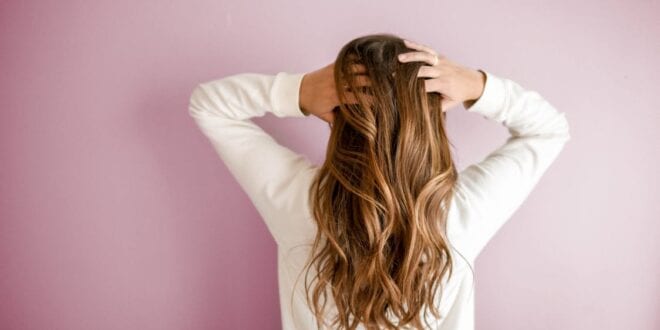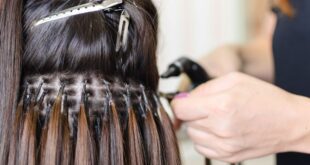Ah, magical hair extensions! Only a few decades ago, we probably couldn’t even dream that the art of adding whole strands in a cozy, natural way would overtake and outlive the popularity of Her Majesty Mrs. Wig. And today… Just look at us – we’re able to choose the color, length, and style that our heart desires, and even to look like our favorite Hollywood stars or go from a short bob to long, dreamy waves in a single day when and if we get bored of the same old thing.
Of course, we have all witnessed situations where the extensions were placed quite badly – we must have stood in line (at least once!) behind a girl whose clips we could clearly see under the awkwardly bad-tied ponytail. That’s precisely why you need to entrust your head to the hands of experienced professionals in order for your precious mane to get the desired and satisfying shape. In line with advances in the hairdressing industry, as well as countless imaginative ideas from artists in the industry, salons, and experts around the world today can boast of several diverse extension methods. And, well, they keep rockin’ with each passing day.
So, this is for all those girls who are hesitant, still thinking about whether to do it or not or for those who are determined to do it any way but don’t know which method would be best for them. We have a small comparative analysis of five best known and most applied ways to which this process can be done. Therefore, please scroll-scroll-scroll and keep reading!
Clip-in
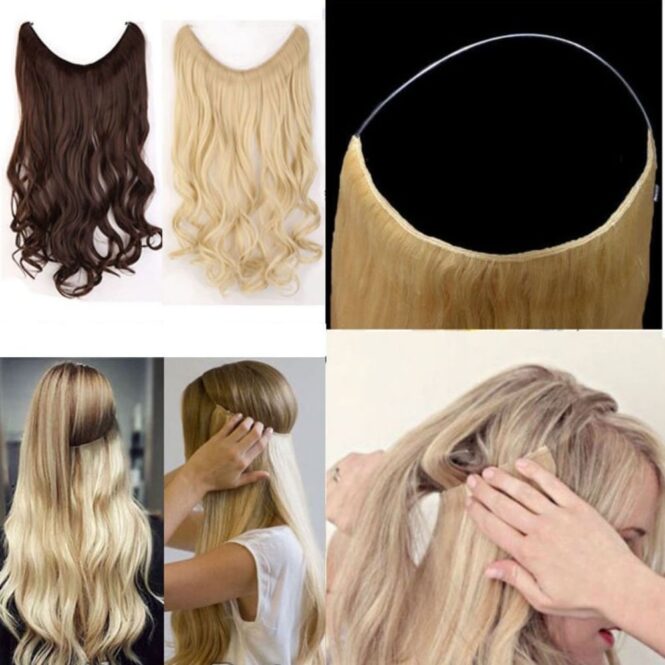
In case you need a quick and simple method for changing your style and adding some length, you probably won’t find a better suggestion for the process than the clip-in one. What’s the matter here? You get the opportunity to transform your style in record time, without too much fuss and chaos, and you can easily remove the same those extensions once you’re done with them. The secret is in the special types of strands that come with small clips that should be placed on the natural hair at the root, next to the head.
Since they’re already attached to the hair you’re about to ‘upgrade’ your style with, there really isn’t too much work to be done. You just clip them, as their name says itself – and that’s it. Of course, it’s desirable for the professional to do it at least for the first time, but if you want to, you can do it yourself next time, in front of the mirror.
This is also recommended for girls and women who don’t intend to make a long-term change to their style. For example, when you need a few extra, enchanting strands for romantic waves for a special occasion, then it’ll serve the purpose perfectly. However, if you want something in the long run, then maybe it’s time to look at some of the suggestions that follow below. This also applies to girls who suffer from intense hair loss or alopecia.
Tape-in
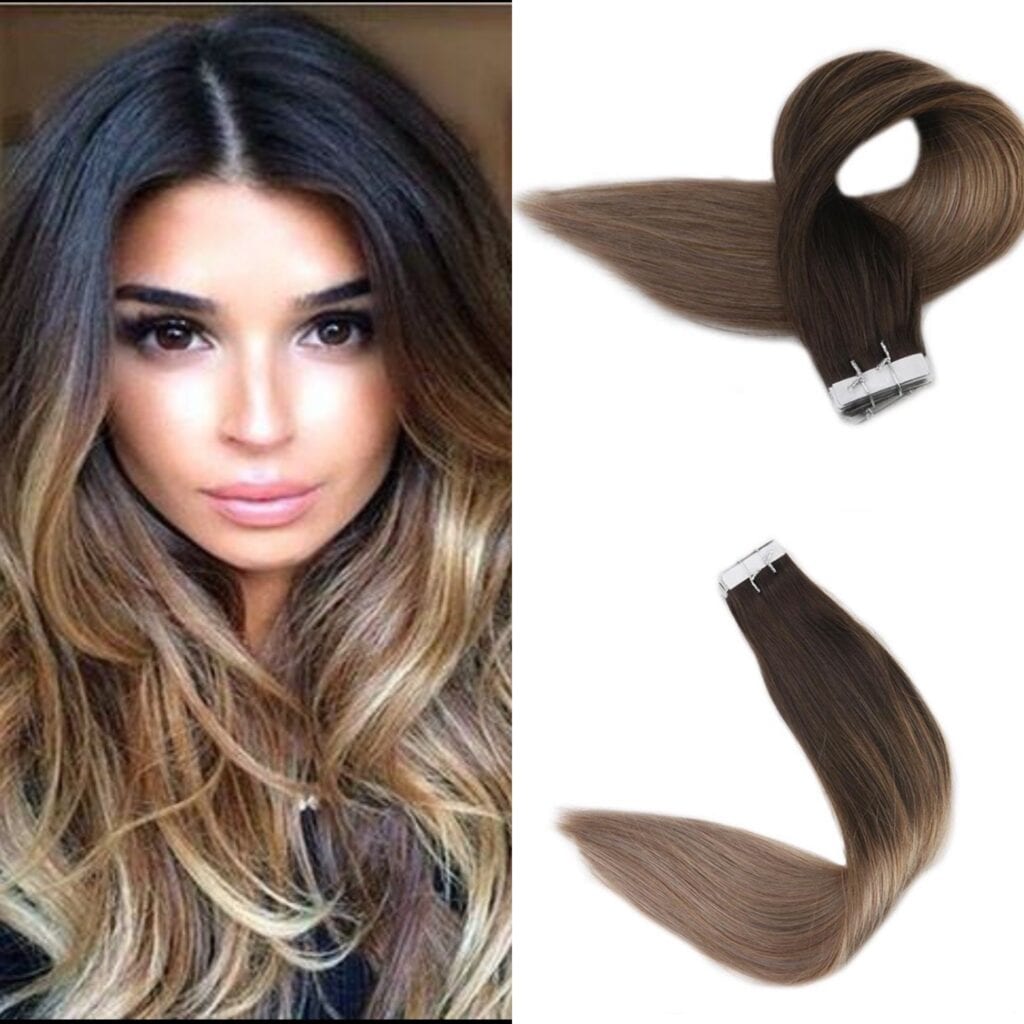
Another way whose name says it all. These are made from several bundles of hair (which can be natural or artificial) which are assembled at the upper end. This assembly might be performed either by gluing them to one type of the tape and placing it on the roots or by simple sewing. The strand is usually inserted between two pieces of bioadhesive, ie. polyurethane tape, so it looks like the extensions are ‘stuck’ between them.
The application of such pieces is faster compared to other, more complex methods since the arrangement might take several hours, and at the same time it’s much persistent than the clip-in extensions – it can successfully stay on the head for up to two months. Thanks to the good arrangement of the adhesive tape under the strands and its invisibility, everything looks pretty neat and fine.
True, you should avoid it if you’re a fan of ponytails, buns, and similar looks – be sure that the tape will be visible and that it will absolutely not be a beautiful or desirable sight. Therefore, tying up, as well as care products that contain sulfates, silicones and other harmful substances are absolutely forbidden. As well as intense exercises and training, especially water sports, for obvious reasons.
Microring extensions
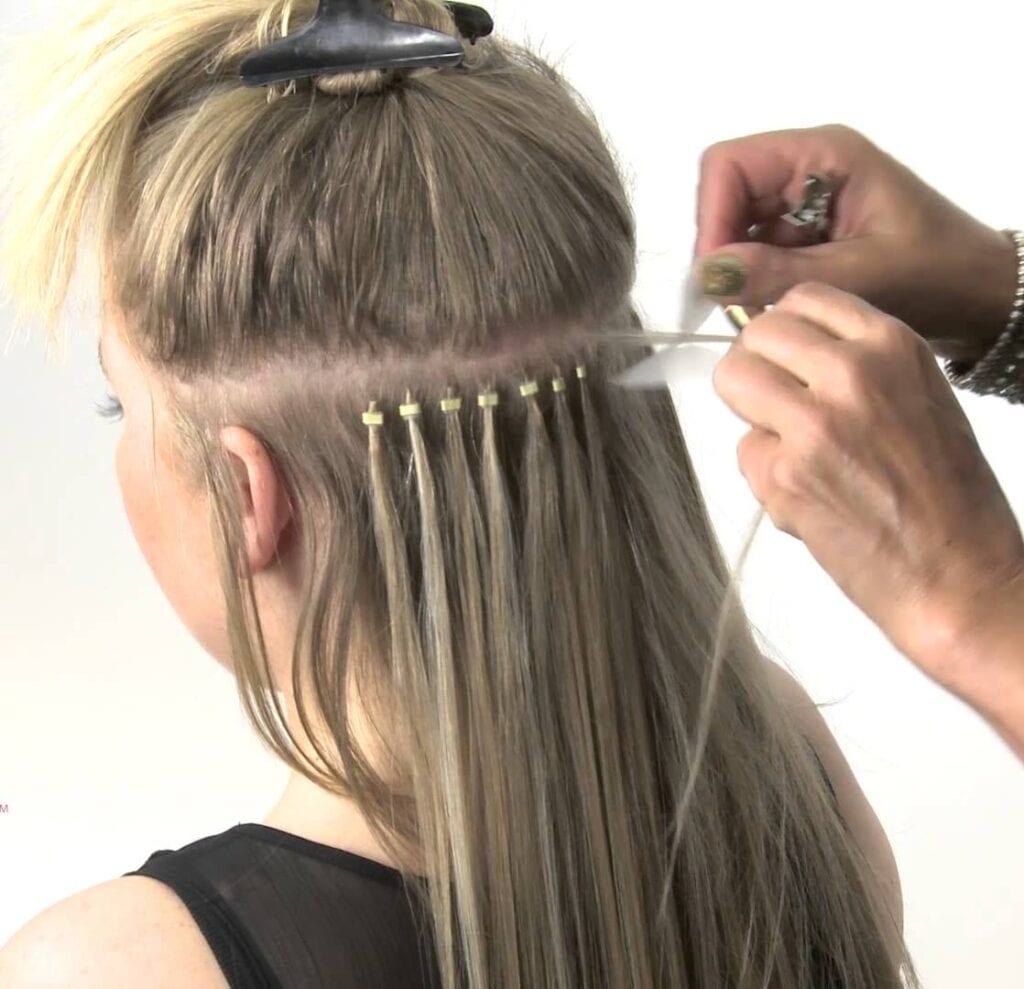
The title of the technique can be understood as ‘extensions with a small ring’, so it draws our attention to the miniature aluminum and silicone rings that are used for this method. These are done by passing a strand from the extension and a strand of your existing tufts through a small ring and then tightening it with special tongs.
The process is quite fast since the strands are added extremely quickly and there are no additional tricks to perform. Another great thing is that, unlike many other techniques, we don’t use glue or any substance that can damage the quality of the hair during this procedure. Also, it isn’t exposed to any amount of heat, which is definitely a positive side though.
The appearance is quite natural, much more than the method with clips, and this technique can last up to six months if properly maintained and nurtured.
Sew-in

Sew-in is definitely one of those that’ll probably take you the most time, but the results are breathtaking. It consists of braiding small fishbone braids (or cornrows), to which selected parts of artificial or natural hair that you have chosen are subsequently applied by sewing. This is mostly done with a needle and synthetic or elastic thread and is somewhat more complicated than the previously mentioned techniques.
However, all this has its advantages – allegedly, it brings the least damage, it’s practical, and at the same time durable if proper care is taken. However, you should also keep in mind that braids that go close and tight to your head can be uncomfortable and cause a certain type of pressure, and also look strange on lighter hair, or on the one of lower quality.
In this case, it is best to nurture and maintain the style at the professional studio and not engage in independent maneuvers and treatment attempts, since the process is rather demanding, although some blogs like the one led by glamlocks.com crew might be quite interesting for hair lovers.
Keratin
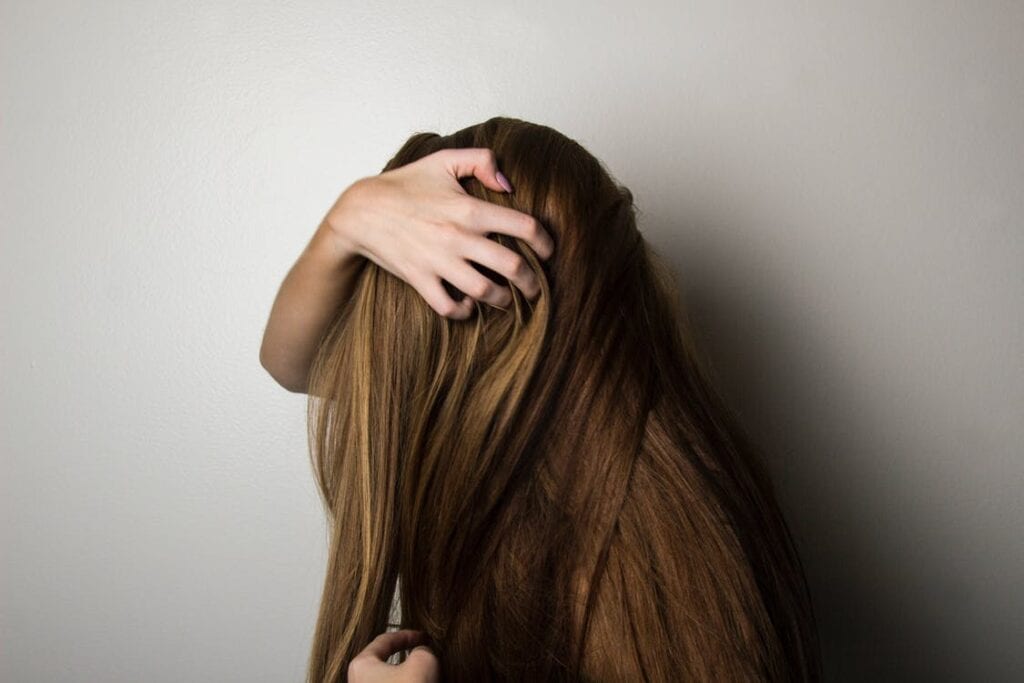
In the end, there it goes – a perfect solution for the ladies to whom mother nature didn’t give a thick, strong mane and volume. Fortunately, this is certainly more than solvable with the use of good assistance and the right way of shaping. Therefore, this treatment is definitely the most effective for thin hair that needs revitalization and additional lushness, because, hey, we all know that lush hair is the most beautiful adornment that a woman might have.
These involve the process by which wisps are gradually added to your own tufts with the help of keratin, thus achieving a perfect effect. Since this can be done exclusively with natural wisps, the principle of behavior is the same as without it – you’re free to dye it, blow-dry, shade, or cut it as much as you wish. By doing this the effect of volume is achieved equally, ie. densities as well as lengths are equal and look natural. You can remove them quite easily, without any fuss, using a specific liquid that dissolves the substance.
 Imagup General Magazine 2024
Imagup General Magazine 2024
